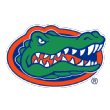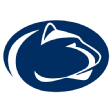College football lookahead is the essential grab bag of numbers, trends, reads and concepts each Monday throughout the season.
Join us inside as we explain which red-hot team's prices have finally caught up with it, look at a mid-major power in decline and break down another big clash in the Big Ten.
Portfolio Checkup
Which teams we're buying and selling, and why.

Sell: Florida Gators
The Gators have impressed this year, especially with the obvious and steady improvement of their offense.
The upcoming three-game stretch of Georgia, Missouri and South Carolina will be tough sledding for an offense that hadn't cracked 400 yards in an FBS game before last week's second-half outburst at Vanderbilt -- and it will certainly put that pass defense to the test. We're not down on the Gators; it's just that prices have finally caught up with the hot start. Be inclined to sell over the next three weeks.

Sell: Southern Mississippi Golden Eagles
This one-time Conference-USA overlord has as proud a tradition as any Southern mid-major, is located in a fertile recruiting area and has no good excuse for being less than the best program in the division and a perennial league title contender. That isn't happening for two reasons.
Jay Hopson is a Vicksburg native, an alum of Ole Miss and Delta State and a former defensive coordinator under Jeff Bower, the program's most successful modern era coach. Hopson is as good a "fit" as you'll find, but he and his staff are coasting a bit. The biggest issue with this team is simply that these coaches are not as demanding as they need to be to win championships. Poor ball security has been tolerated throughout Hopson's tenure, and certain games are emphasized more than others to the detriment of the team's consistency. No regime in any league in the FBS can meet its expectations by being as tolerant as this staff is of inconsistent practice habits as the same players repeatedly make the same mistakes.
Good is good enough with this team right now, and the reason that conference championship-level excellence is not being demanded of the players is because it's not being demanded of the staff.
Southern Miss' pedigree exceeds that of most AAC programs and a handful of Power 5 schools. But the Eagles were left in stasis as many of the more urban universities that had previously been their peers in the ranks of the Southern independents, the Metro Conference and Conference USA moved on to more lucrative arrangements. The school's response was too much resignation and acceptance, and not enough of a "love-the-one-you're-with" mentality. Past urgency to remain a top power in Conference USA has waned as athletics has been subtly de-emphasized from the president's office on down. That's been exacerbated by turnover in the administration and lack of cohesive vision the past few years.
For all of this to change, it will require a real recommitment on the part of the university -- and that's not happening anytime soon. The coaches are guilty of the same thing as their bosses -- settling. Southern Miss is 3-3 with a game washed out. The disastrous one-year Ellis Johnson experiment and the two seasons it took successor Todd Monken to climb out of the hole are the program's only three losing campaigns in the last quarter-century, but another one wouldn't be a surprise even though the Eagles will be favorites in at least three of their five remaining games.
Slate standout
A game we'll be studying closely this week, and what we're looking for.


Iowa Hawkeyes at Penn State Nittany Lions (-4.5)
Penn State captains knew that after championship expectations faded with a second loss, especially one suffered in such last-second fashion as the Nittany Lions' setback against Michigan State, the team was at risk of having its bubble burst. The fear was that that would take away some of their fire, which could lead to some members of the team not approaching the second half of the season with as much urgency.
They didn't exactly hold a players' only meeting (and more on those below, and how they've cost Penn State the past two weeks), but the veteran leaders went to James Franklin and talked about the message a young team needed to hear. This is indeed a young team, one that has plenty of holes to fix on the field and is still at risk of being unable to overcome the disappointment of not being a national contender.
The Lions managed to escape Indiana, but they were thoroughly out-statted as they neeeded a special teams score and some timely third-down and red zone heroics from Trace McSorley. Indiana ran 100 plays, and a defense that recently enjoyed an open date might now be a bit gassed. They'll have to pull it together quickly on that side of the ball and find some more offense outside of McSorley if they want to beat Iowa.
They'll also have to protect McSorley. Iowa is top-10 nationally in sacks and sack yardage despite typically sending just a four-man rush. Last week we wrote about what a difficult preparation Maryland's unique offense was for an Iowa defense that hadn't seen anything like it in years. The coaches were clearly concerned mostly about that side of the ball, but Phil Parker's charges shut out the Terps, allowing just 115 yards and seven first downs. The Iowa defense is feeling it right now, and they're about to face an offense that relies too heavily on one man.
All of that information has us leaning towards the Hawkeyes early, but McSorley and the Iowa defense are the more known quantities when we start to analyze this game. We'll mostly be trying to answer questions about the other side of the ball this week as we handicap this game. How banged up and worn out is Penn State's defense? They'll need to be healthy and fresh in order to face the pounding of a physical Iowa offense.
That offense hasn't been rushing the ball like it wants to this year. The return of projected starter Ivory Kelly-Martin last week certainly gave the unit a lift, and it was good to see that he was able to step right back into the workhorse role by logging 98 yards on 24 carries. But while the Hawks rolled up a season-high 224 yards on the ground, it took 54 attempts to get there. The team hasn't averaged five yards per rush in a game all season, and has just three rushes longer than 20 yards on the year. What we'll want to know this week is how Kirk and Brian Ferentz feel about the running game's progress and prospects post-Maryland -- whether that was a real step forward and what kind of difference they think Kelly-Martin can make down the stretch.
Handicapper's toolbox
Handicapper's toolbox will provide a different concept every Monday, along with how to apply it on Saturday.
Players-only meetings are positive more often than not, but context is required to accurately forecast their effects.
Penn State backers were firing into the teeth of the opposition the past two weeks, as the Blue and White rung up two more ATS losses in part because Michigan State and Indiana each benefited from players-only meetings held right before facing the Nittany Lions. Those meetings were helpful, as were similar meetings held earlier this year by Florida State, Mississippi State and Kansas State, among others. Nebraska reeled off three straight covers after the Huskers formally gathered sans coaches.
Players-only meetings seem like dramatic steps, but happen more than you probably think. We'd guess the average fifth-year senior attends about three of them in his career. These types of meetings are typically held early in the week, but sometimes it's midweek, during an open date, or even in the offseason. LSU held one in August after some player defections and other offseason issues alarmed the leaders. California held one at the team hotel last Friday night on the road at Oregon State, affirming each man's commitment to the team before trouncing the Beavers 49-7 the next day.
While positive more often than not, player meetings can have a detrimental effect too, especially when coaches are blamed or the leaders don't or can't back up their talk. In order to form a solid interpretation, you need as much context as possible. Ideally, you would understand the team's chemistry and leadership structure and be familiar with its personalities. That all goes back to following the team in the offseason, as it's forged, and then there's the immediate situation. Which players called the meeting, what is their role on the team and how effective are they at it? What are the issues being addressed?
When lack of information means you must generalize, the best approach is cautious optimism. Give the meeting credit for positive effects until demonstrated otherwise. Be more likely to back and less likely to fade that team than you were previously. Then watch the following week's performance closely. If the team plays hard, plays together and plays reasonably well for four quarters -- independent of winning or losing -- then tend to give the meeting credit for having accomplished something. If the team fails to show all three of the above, then not so much. That's especially true if you notice a disengaged sideline, poor body language or players arguing or showing frustration with each other during the game. Those are always bad signs, but doubly so the week after team leaders have played the rally card.
